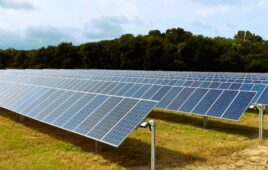REC Silicon just announced that 100% of its polysilicon product at its Moses Lake factory will go to Hanwha Solutions for the next 10 years.
The polysilicon factory in Washington has been dormant since being priced out of the Chinese market. Last year, Hanwha Solutions became the largest shareholder in REC Silicon, and its solar panel manufacturing subsidiary Qcells announced it will establish silicon ingot, wafer and cell manufacturing within the United States. Now with a dedicated customer for its polysilicon, REC Silicon can restart production at Moses Lake.
“Our focus has been on entering into a quality contract with a quality partner and with this, REC Silicon continues to move forward with our plan for a re-start of the facility in the fourth quarter 2023, with an ambition to reach full capacity utilization by year end 2024,” said Kurt Levens, CEO of REC Silicon.
The contract is a 10-year take-or pay offtake. The base price for the contract will be determined by market indices adjusted for a premium for American-sourced low-carbon material. The base price is also subject to both a minimum and maximum that protects REC Silicon against potential future low market prices that could otherwise threaten the long-term prospects. To secure the offtake obligations and to provide security in support of the restart of the Moses Lake facility, Hanwha Solutions will, upon entering into the full form agreement, make a significant prepayment. The parties expect that a full form agreement including all operational details will be entered into in the coming months and will be announced when finalized.






Got a better idea?
“The base price is also subject to both a minimum and maximum that protects REC Silicon against potential future low market prices that could otherwise threaten the long-term prospects.”
REC polysilicon seems to be “price regulated” within the confines of the 10 year agreement. With Hanwha at the wheel, this may not turn out like people thinks it will. That 10 years is right in the IRA sweet spot and after that when the IRA runs out and perhaps, doesn’t, get replaced by “something else”, REC will stand alone without subsidies for American supply chain materials. Then what happens to this once American supply chain?